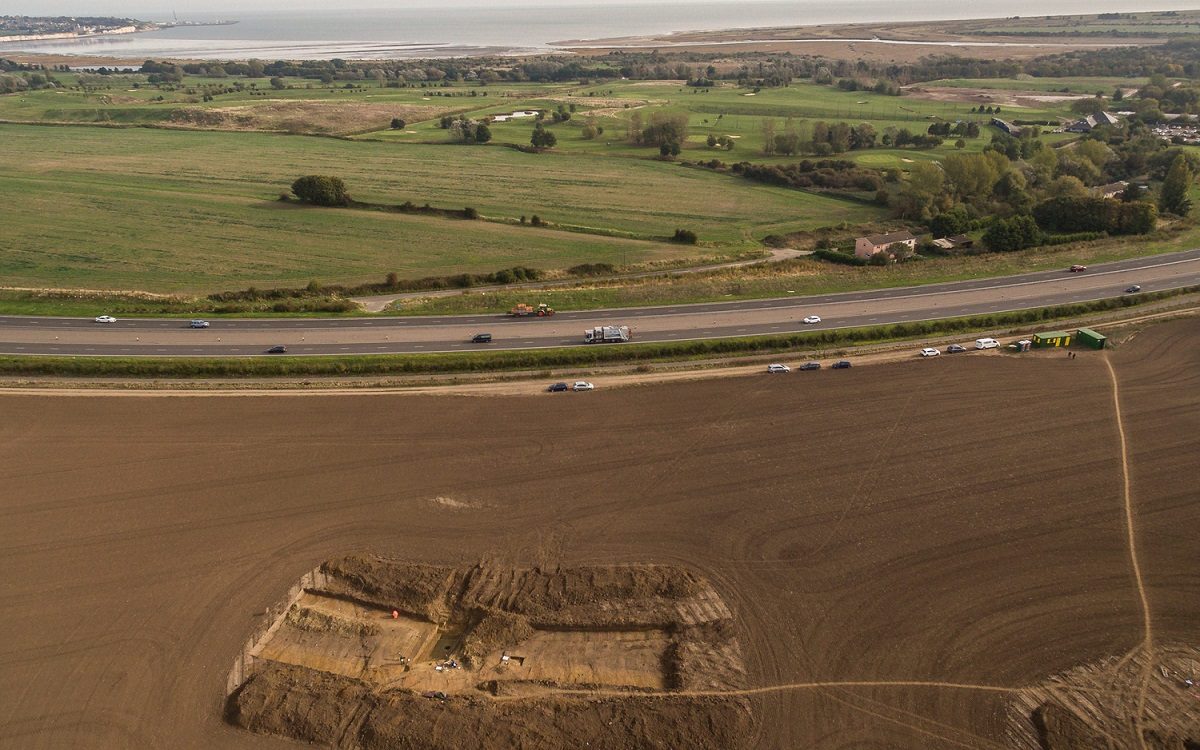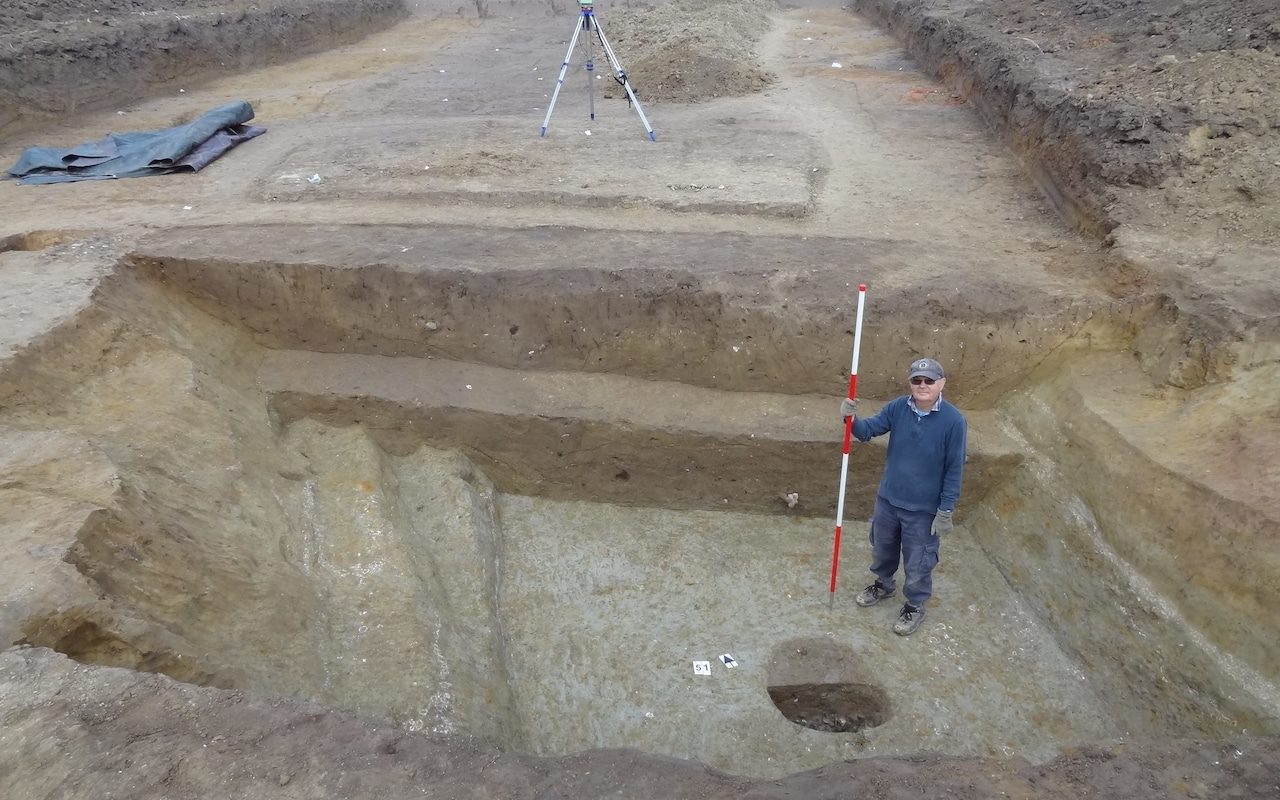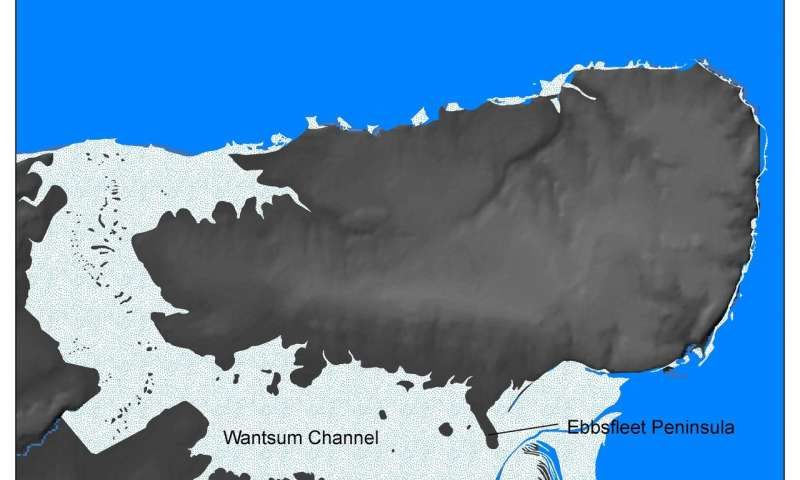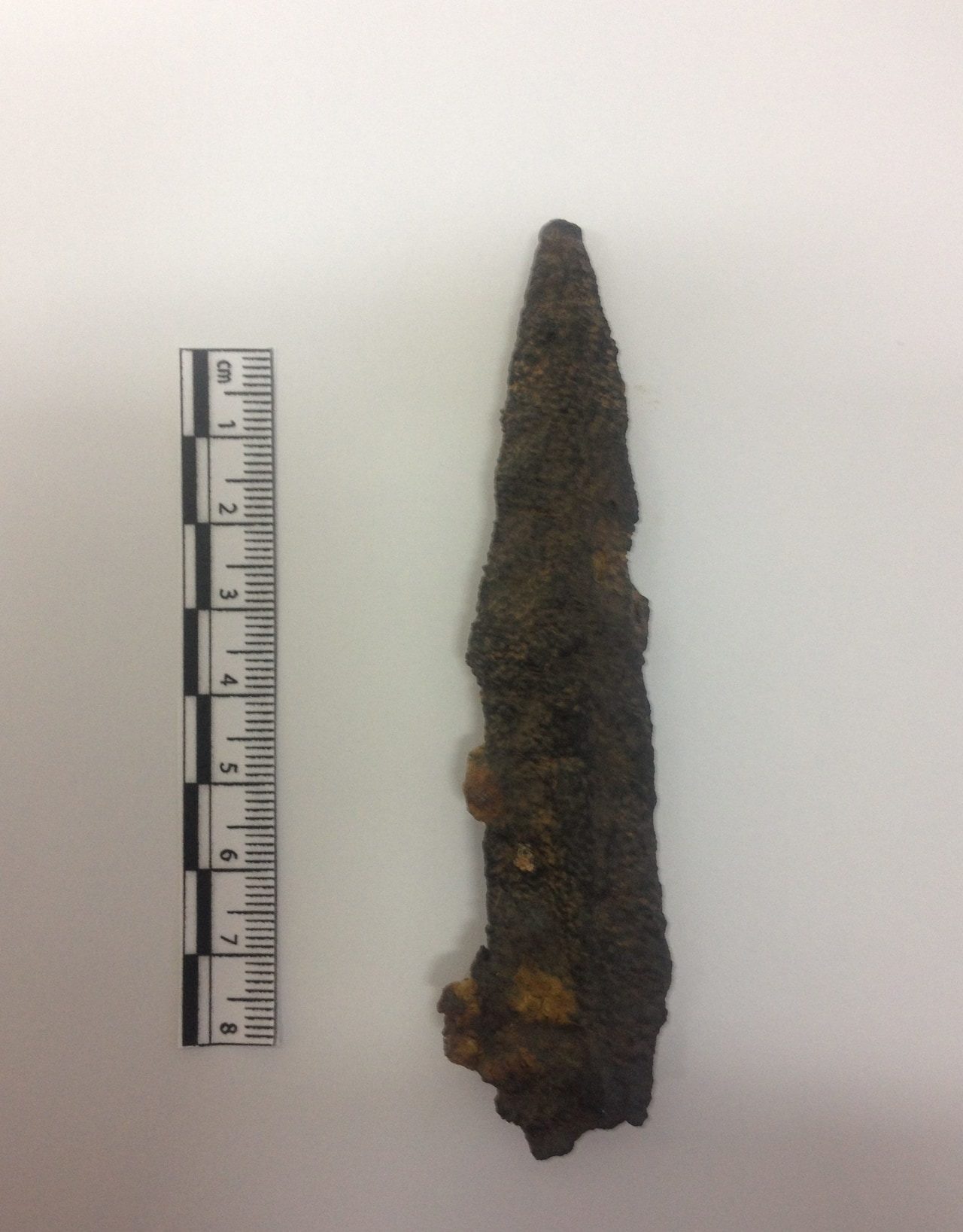
Yet, despite a huge landing force of legionaries from 800 ships, no archaeological evidence for the attack or any physical remains of encampments have ever been found.
But now a chance excavation carried out ahead of a road-building project in Kent has uncovered what is thought to be the first solid proof for the invasion.
Archaeologists from the University of Leicester and Kent County Council have found a defensive ditch and javelin spear at Ebbsfleet, a hamlet on the Isle of Thanet.
The shape of the ditch at Ebbsfleet, is similar to Roman defences at Alésia in France, where a decisive battle in the Gallic War took place in 52 BC.
Experts also discovered that nearby Pegwell Bay is one of the only bays in the vicinity which could have provided harbour for such a huge fleet of ships. And its topography echoes Caesar's own observations of the landing site.
Dr Andrew Fitzpatrick, Research Associate from the University of Leicester's School of Archaeology and Ancient History said:
"Caesar describes how the ships were left at anchor at an even and open shore and how they were damaged by a great storm. This description is consistent with Pegwell Bay, which today is the largest bay on the east Kent coast and is open and flat.Thanet has never been considered as a possible landing site before because it was separated from the mainland until the Middle Ages by the Wanstum Channel. Most historians had speculated that the landing happened at Deal, which lies to the south of Pegwell Bay.
"The bay is big enough for the whole Roman army to have landed in the single day that Caesar describes. The 800 ships, even if they landed in waves, would still have needed a landing front 1-2 km wide.
"Caesar also describes how the Britons had assembled to oppose the landing but, taken aback by the size of the fleet, they concealed themselves on the higher ground. This is consistent with the higher ground of the Isle of Thanet around Ramsgate."
But the experts believe that the Wantsum Channel would not have proved a challenge for the capabilities of the Roman Army.
Although the site at Ebbsfleet appears to be inland, at the time of the invasion it would have lain much closer to the coast. The ditch is around 15ft (4-5m) wide and 6ft (2m) deep and is dated by pottery and radiocarbon dates to the 1st century BC.
The size, shape, date of the defences at Ebbsfleet and the presence of iron weapons including a Roman pilum (javelin) all suggest that the site at Ebbsfleet was once a Roman base of 1st century BC date.

Professor Colin Haselgrove, the principal investigator for the project from the University of Leicester, explained:
"It seems likely that the treaties set up by Caesar formed the basis for alliances between Rome and British royal families.The findings will be broadcast on BBC Four's Digging For Britain. The East episode, in which the Ebbsfleet site appears, will be the second programme in the series, and will be broadcast on Wednesday 29 November 2017.
"This eventually resulted in the leading rulers of south-east England becoming client kings of Rome. Almost 100 years after Caesar, in AD 43 the emperor Claudius invaded Britain.
"The conquest of south-east England seems to have been rapid, probably because the kings in this region were already allied to Rome.
"This was the beginning of the permanent Roman occupation of Britain, which included Wales and some of Scotland, and lasted for almost 400 years, suggesting that Claudius later exploited Caesar's legacy."







Evidence?! We don't need no stickin' evidence! Let the historians worry about that silly stuff!